I run B2B service pipelines on three levers: speed, fit, and follow-through. I want my team focused on quality conversations, not guesswork. That is where agentic AI lead qualification earns its keep for me. It listens, scores, explains, and routes leads while my people stay on the deals that matter. It also rolls out in stages without blowing up the CRM or the budget, as long as I keep scope tight and guardrails firm.
Agentic AI lead qualification integration
Here is a clear six-step plan I use so leaders do not have to babysit the details.
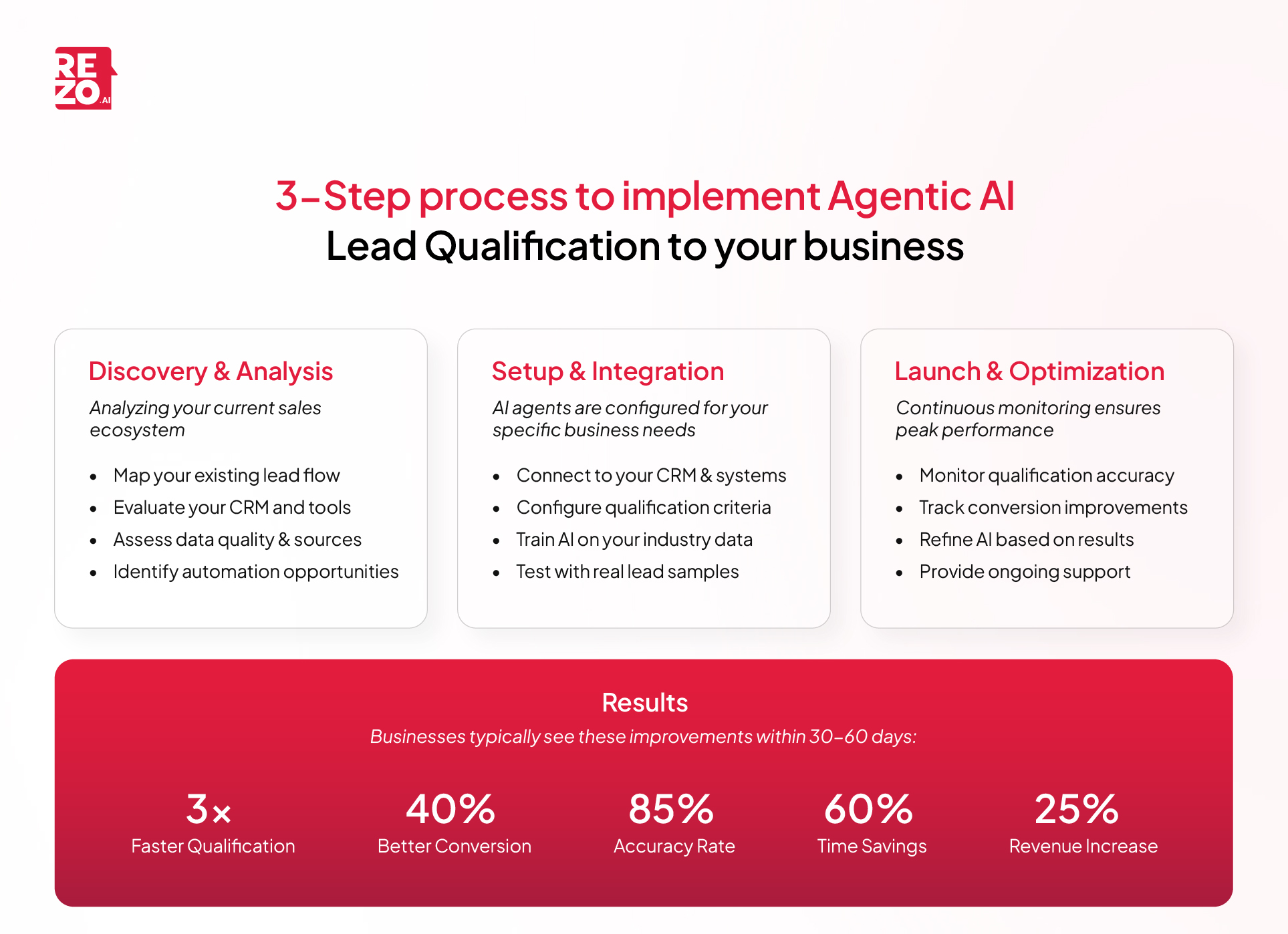
1) Audit data sources and define ICP and MQL criteria
- Inventory every signal already in play: web forms, chat transcripts, webinar attendance, email replies, call notes, meeting no-shows, UTM data, and first-party CRM fields.
- Lock down a simple, documented Ideal Customer Profile: firmographic and technographic markers, buying role, budget ranges, and timing windows. Write it as if onboarding a new teammate.
- Express MQL and SQL rules explicitly. Example: ICP equals North American professional services firms with 50–500 employees, using Salesforce or HubSpot, with a services ACV of $20k+.
- Capture negative qualifiers too: mismatched industries, no budget, student inquiries, and vendor intel fishing. Keep these just as explicit as the positive rules.
2) Map qualification workflows
- Draw the path from first touch to booked meeting and include exceptions. Example: web form → intent detection → ICP fit check → enrichment → score → human review → book or nurture.
- Set reason codes at each branch: not ICP, missing budget, timeline too long, competitor locked in, or no response. Reason codes make reporting and coaching real.
- Define SLAs. Targets: less than 2 minutes for inbound chat during business hours, less than 5 minutes for forms, and less than 1 hour after hours with a scheduled, personalized follow-up.
3) Design prompts, policies, and guardrails
- Use few-shot examples from past conversations to show the model what good looks like and why a lead was scored that way.
- Create a policy pack: banned claims, compliance escalations, and sensitive topics that must go to a human. Add hallucination controls (citation requirements, retrieval checks) so the model proves its statements.
- Keep system prompts short and testable per agent. Example for the qualification agent: score 0–100; always include three reasons with evidence; do not invent data; call enrichment when firmographics are missing.
4) Connect data and CRM
- Start with secure API access to Salesforce, HubSpot, Zoho, or Microsoft Dynamics, and mirror lifecycle stages: MQL → SQL → Opportunity with date stamps and owner.
- Map fields up front: lead source, last-touch channel, ICP fit, qualification score, reason codes, enrichment status, and current sequence.
- Add dedupe rules using email and company domain. Create audit logs for every update - no silent edits.
5) Deploy agents with a human in the loop
- Begin with an inbound triage agent and a qualification agent to handle the time-consuming checks. Keep meeting scheduling human in phase one if the market expects it.
- Route edge cases to an SDR or AE with complete AI rationale. The team should see the input, model reasoning, and linked evidence so trust builds quickly.
- Expand to enrichment and follow-up agents once core scoring is stable.
6) Measure impact
- Track MQL→SQL rate, win rate, cycle time, SDR hours saved, and cost per SQL. Add velocity by channel to favor faster paths.
- Compare AI scores against human decisions weekly. Aim for 85–90% agreement before widening coverage.
- Review conversation quality. The goal is to speed up good deals, not add noise.
A practical 30/60/90-day timeline I use
30 days
- Data audit finished, ICP and MQL rules documented, triage agent live on one channel, CRM field mapping published, and a dashboard for response time and coverage.
60 days
- Qualification agent live across web and email, enrichment automated for firmographics and tech stack, AI vs. human benchmark above ~85% agreement, and first lift in SQL conversion or cycle time.
90 days
- Scheduler and follow-up agents added, multilingual support for key markets if needed, full CRM lifecycle reporting with reason codes, and early signs of improved CAC driven by cleaner routing and fewer handoffs.
Benchmarks vary by industry and deal size. For example, faster first response is a reliable early indicator: research published in HBR (The Short Life of Online Sales Leads, 2011) found teams were far more likely to qualify leads when replying within minutes vs. hours. I treat that as a directional guardrail, then validate with my own data.
What I watch: wins, risks, and ROI signals
- Near-term wins to look for: response times dropping to minutes, qualification coverage exceeding 80–90% on inbound, fewer false positives in pipeline, and 6–10 SDR hours freed weekly per rep (ranges depend on inbound volume and channel mix). See also Sales teams waste 80%.
- Risks and fixes: hallucinations mitigated by retrieval checks, function calling for enrichment, and citation rules; tight human escalations for compliance; PII masked with role-based access and logging.
- ROI checkpoints: by day 30, faster first response; by day 60, higher MQL→SQL conversion; by day 90, shorter cycles and lower CAC on qualified paths. Validate each checkpoint against a pre-defined baseline and seasonality.
- People impact: SDRs spend more time on real conversations and less on repetitive checks; AEs get cleaner meetings; marketing sees clearer attribution.
- Control remains with the business: policies and thresholds are adjustable, the model explains its reasoning, and human overrides are explicit and logged.
Persistent B2B lead gen problems I encounter
B2B services live with long cycles and buying groups, which invites drift. Five common pain points show up again and again.
- Disorganized engagement across inbound channels. Leads arrive via forms, chat, email, and webinars, yet each queue runs on its own. Result: missed messages and delayed replies. A triage agent can watch all inbound paths and apply the same rules every time. Related: Disorganised Customer Engagement.
- Delayed first response. A minute is short unless you are the person waiting. Even a 10-minute delay on a high-intent form can cut your chances. Agents can greet, fill gaps, and move to meeting suggestions while the lead is still on site. See Delayed Responses to Customers.
- Inconsistent messaging. SDRs vary scripts based on mood or memory. An AI agent follows policies and adds context from the lead’s behavior. It stays within guardrails while echoing the lead’s language. More on Inconsistent Cross-channel Presence.
- Leaky handoffs from marketing to SDR to AE. Notes get lost, reason codes disappear, and meetings get booked with the wrong person. With reasoned scoring and clear states, the CRM holds the story from first touch to booked meeting.
- Poor attribution and weak reporting. If I do not know which campaign or content created SQLs, I am spending blind. Agents can tag and propagate source and touch data so channel CAC comparisons become real.
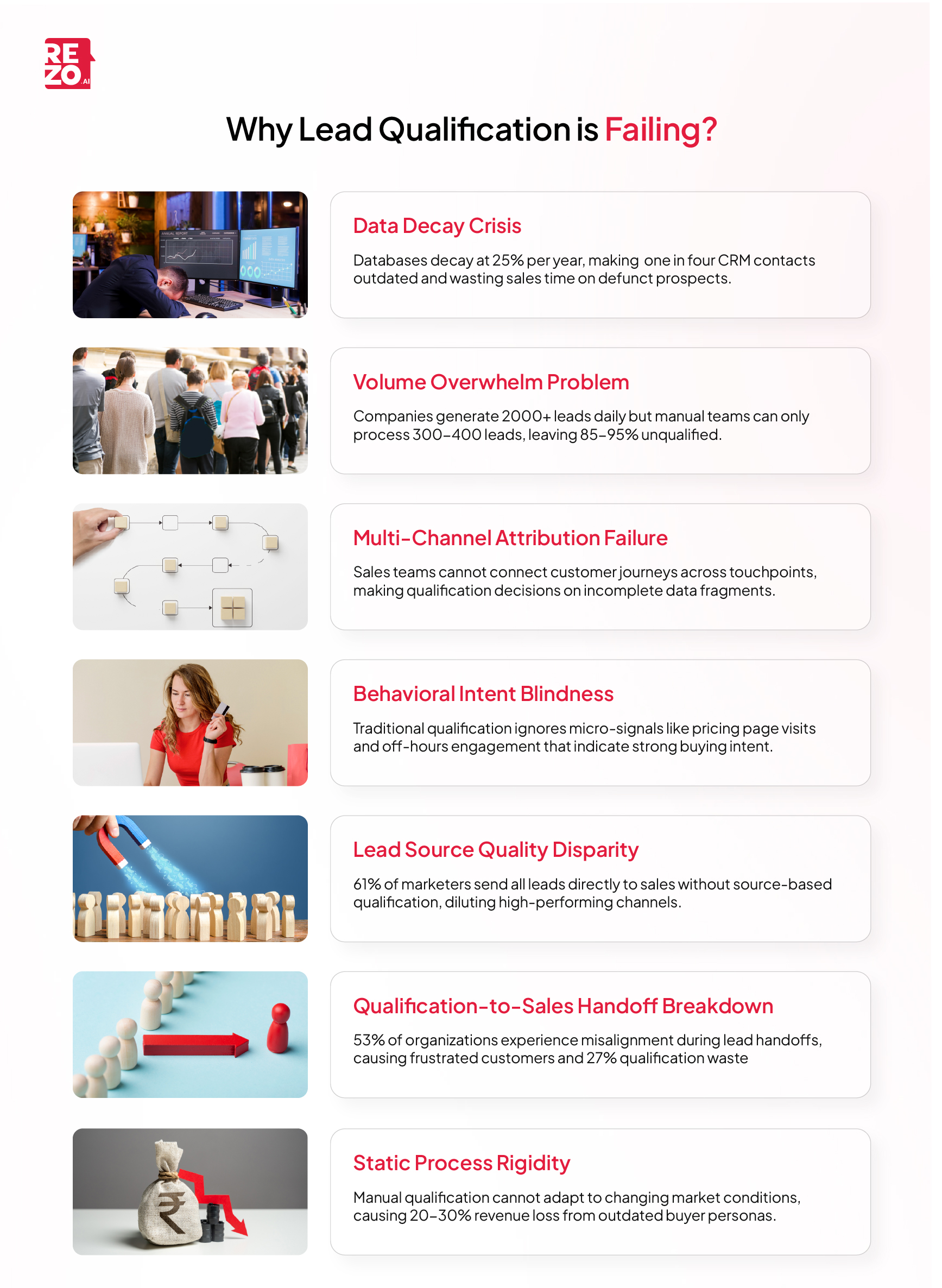
A pragmatic AI stack for qualification
- NLP and intent recognition: detect purpose, urgency, and sentiment across forms, chats, emails, and calls (with speech-to-text if needed). Details: NLP Framework.
- LLMs with retrieval and function calling: retrieval pulls policies and product notes into the prompt; function calling requests enrichment, calendar lookups, and CRM updates without guessing. See ML Models & LLMs.
- Agent orchestration: a lightweight orchestrator coordinates triage, qualification, enrichment, scheduling, and follow-up; each agent has a narrow job and a clear policy. Explore Autonomous Agents.
- Routing engine: rules plus model scores decide the next path. High score with strong intent jumps to scheduling; mid score moves to nurture with timed check-backs; low score closes out with reasons logged. See Intelligent Routing Engine.
- RPA and enrichment: pull firmographics, headcount, funding, and tech stack from trusted sources or data marts; validate emails and calendars; rate-limit and log externally. More on RPA.
- Enterprise CRM and marketing automation integrations: mirror lifecycle, push scores and reasons, and read activity logs for context. See Enterprise grade CCI Integrations.
- Cloud and microservices: containerized services with secrets management, CI pipelines, and autoscaling; keep model calls in-region if compliance requires it. Learn about Cloud Infrastructure & Microservice Architecture.
- Monitoring and observability: track latency, token costs, tool calls, and error rates; add quality checks for prompts, outputs, and field updates. Explore Real time Insights & Analytics.
- Governance and safety: mask PII where possible; restrict access by role; version prompts, examples, and outputs; apply SOC 2-style controls; require human approval for high-risk actions (pricing promises, legal statements).
How I structure autonomous agents
I treat agents as reliable specialists with one job and a playbook.
- Inbound triage agent: greets, thanks, and extracts basics. If a field is missing, it asks one polite question. Policy: confirm name, company, role, and intent; pass to qualification with a short summary; escalate to a human if the message includes complaints or legal language.
- Qualification agent: scores fit and intent, checks ICP rules, and calls enrichment when needed. It returns a 0–100 score with three reasons linked to evidence; low confidence is tagged for human review. Related: Lead Qualification.
- Enrichment agent: calls data providers and the warehouse to fill gaps (employee count, tech stack, industry). It never overwrites human-entered data without a flag and a log.
- Scheduler agent: suggests times based on the assigned rep’s calendar, localizes time zones, confirms a short agenda, and handles reschedules gracefully without double-booking. See Appointment Booking.
- Follow-up agent: sends nudges when leads go quiet. It keeps messages short and personalized, uses reason codes as context, and stops when it detects a no thanks. See Follows up Calls and Reactivation Calls.
All agents follow SLAs. If a task exceeds a threshold, it hands off to a human with a complete activity trail. That is how I keep speed without losing trust.
The core workflow, end to end
Here is the flow I can draft on a whiteboard and then automate.
- Inbound form, chat, or email arrives. Triage captures missing fields and checks language.
- Intent classification. Demo request, pricing question, partnership, support, or other. Off-topic requests get a polite redirect.
- ICP fit check. Company size, industry, geography, tech stack, and role. If key data is missing, enrichment runs with safe defaults.
- Enrichment. Pull data from the warehouse and third-party sources; validate email and domain; store enrichment status to avoid repeats.
- Lead score. Combine behavior signals (page views, webinar engagement, email replies) with ICP fit and intent strength. Produce a numeric score and a letter grade for clarity.
- Route. If score passes the meeting threshold, propose times and book. If score is close but not enough, enroll in nurture with a scheduled check-in. If score is low, close with a friendly note and save reasons in the CRM.
- CRM update. Push score, grade, reasons, and status. Set the correct lifecycle stage and owner. Write an activity note with the model’s explanation and links to evidence.
Industry notes
- NBFC: include credit product interest, region, and compliance flags. Escalate faster if timeline is under 30 days or the loan amount exceeds a set level.
- Telecom: check for multi-site operations, vendor lock-in, and contract dates. Expect multi-stakeholder routing; track each contact’s role and intent.
- SaaS: consider current stack and integrations. Emphasize problem statements and job-to-be-done. Weigh product fit and timeline more than company size.
- Professional services: projects are scoped and time-bound. Score for budget clarity, decision-maker access, and urgency tied to events (audits, new locations).
Multilingual support
If I sell in multiple regions, I enable language detection in triage, then route to localized prompts and templates. I keep one policy pack with language variants rather than separate logic per country. Reporting stays clean while tone and norms are respected.
CRM integration that stays boring and safe
Integration should feel predictable.
- Native and API paths: use official connectors or REST APIs; keep scopes tight; read, write, and update only what is needed.
- Field mapping: standard fields (lifecycle stage, lead status, owner, email, phone) and custom fields (ICP fit yes/no, qualification score, grade, reason codes, enrichment status, last qualified date, agent confidence, language).
- Dedupe rules: match on email and company domain with fuzzy company name checks; when duplicates are found, merge with a log showing what changed and why.
- Lead status progression: new → working → qualified → disqualified, with reason codes at each move. If a meeting is booked, set SQL and attach event details. If a meeting is missed, auto-schedule a friendly follow-up.
- Reporting alignment: MQL→SQL conversion, SQL→opportunity, source and campaign tagging, and time-in-stage; slice by channel, industry, and agent vs. human routing.
- Data sync cadence: real time for new leads and status changes; hourly for enrichment; daily for rollups. Back off and retry on API limits. Alert on failures so silent drops do not hide issues.
- Audit logs: every write includes who or what made the change, when, and a link to the rationale. Accountability lives here.
A short deployment plan helps: connect, map, test in sandbox, and roll to production in two to three weeks with a limited channel scope, then expand.
Closing perspective
Agentic AI is not a brittle script that guesses rules. It makes decisions within guardrails, uses retrieval and enrichment for facts, and explains choices with evidence. Traditional point-based scoring treats every whitepaper the same; this approach reads intent, context, and timing, then updates the score as the conversation evolves. I keep humans in the loop where judgment matters (pricing, custom scopes), let agents handle the heavy lifting (repetitive checks, data hygiene, follow-ups), and keep policies tight with clean logs and a disciplined CRM. Do that, and cycle time drops, confidence rises, and the pipeline becomes something I can forecast with a straighter face.

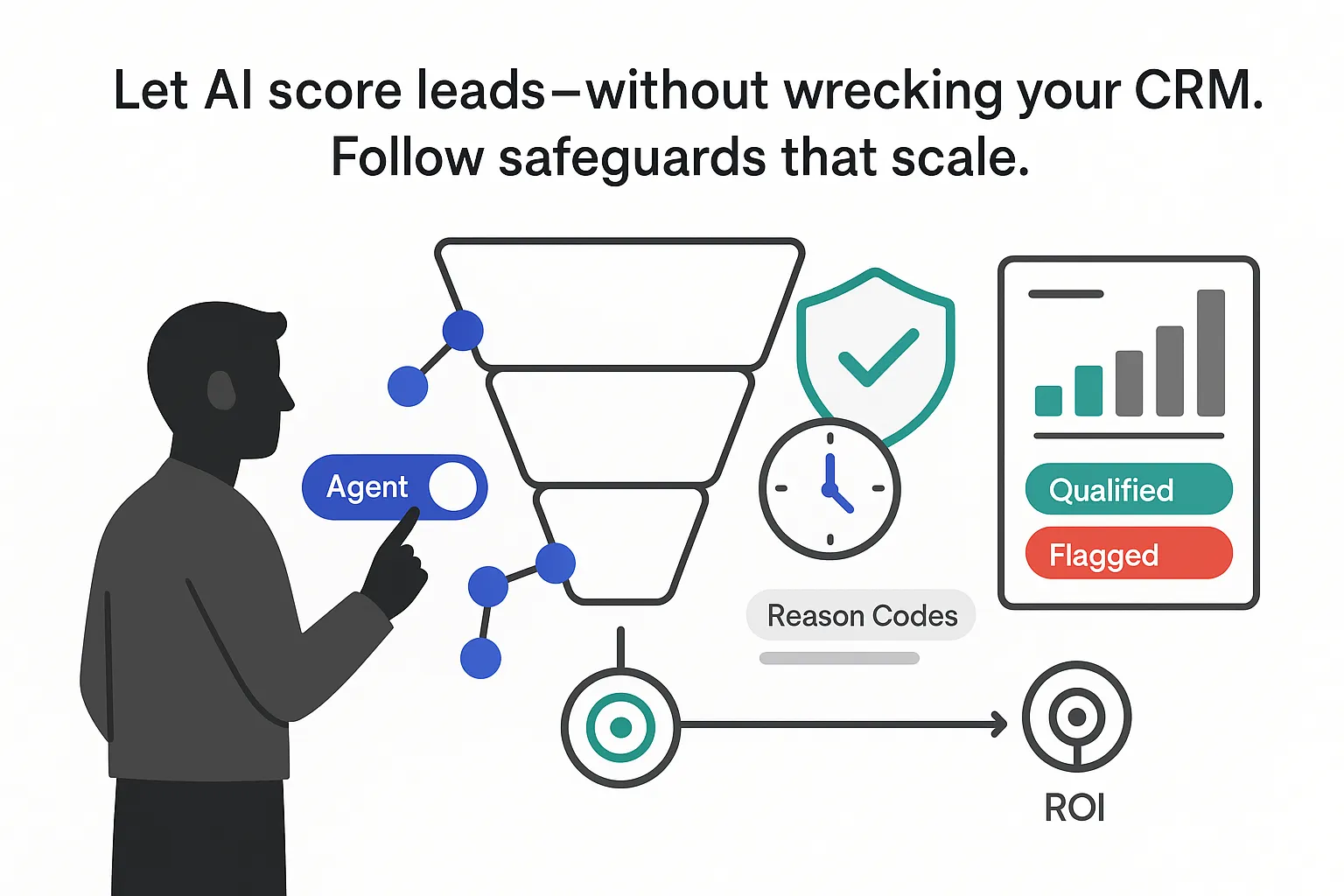

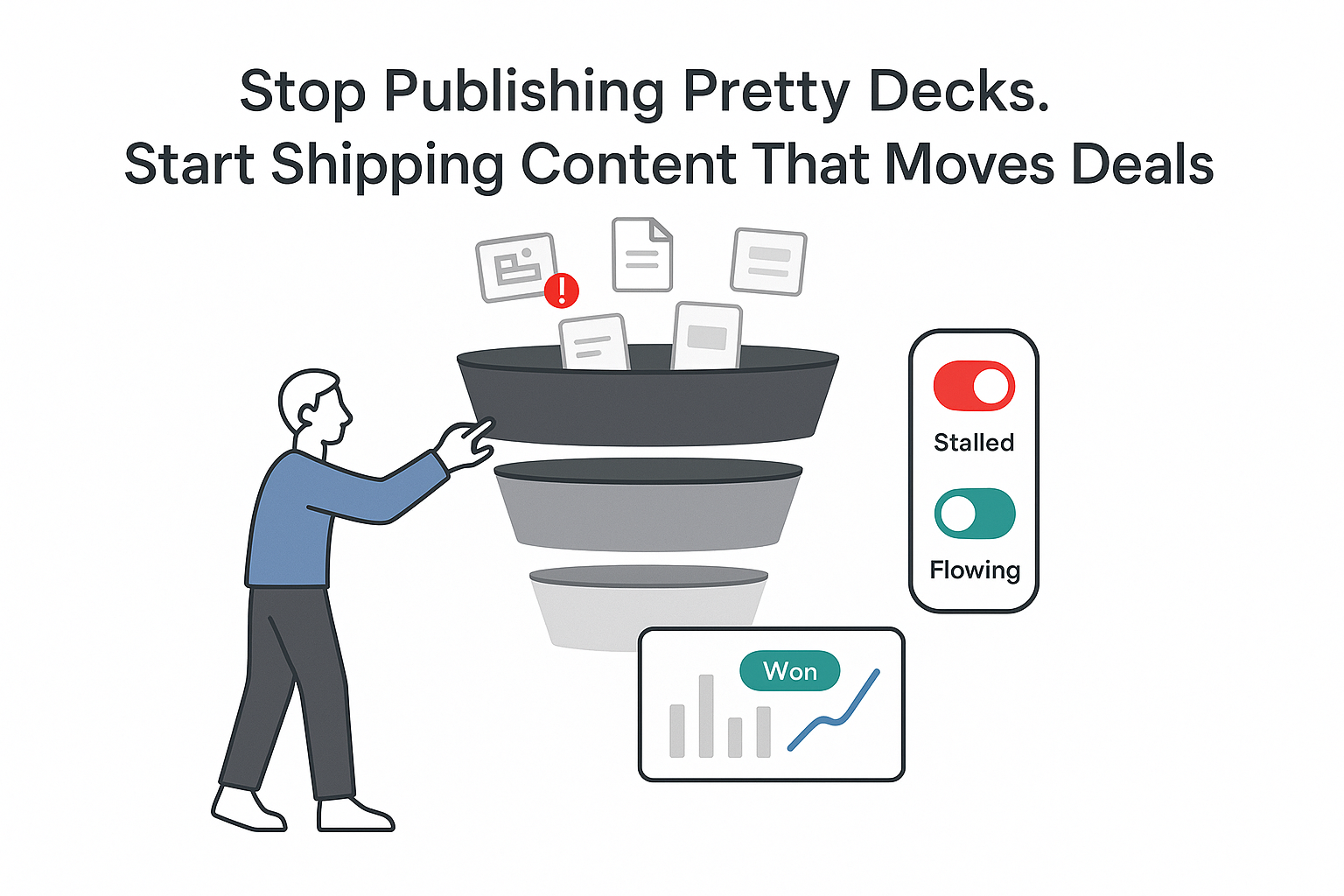
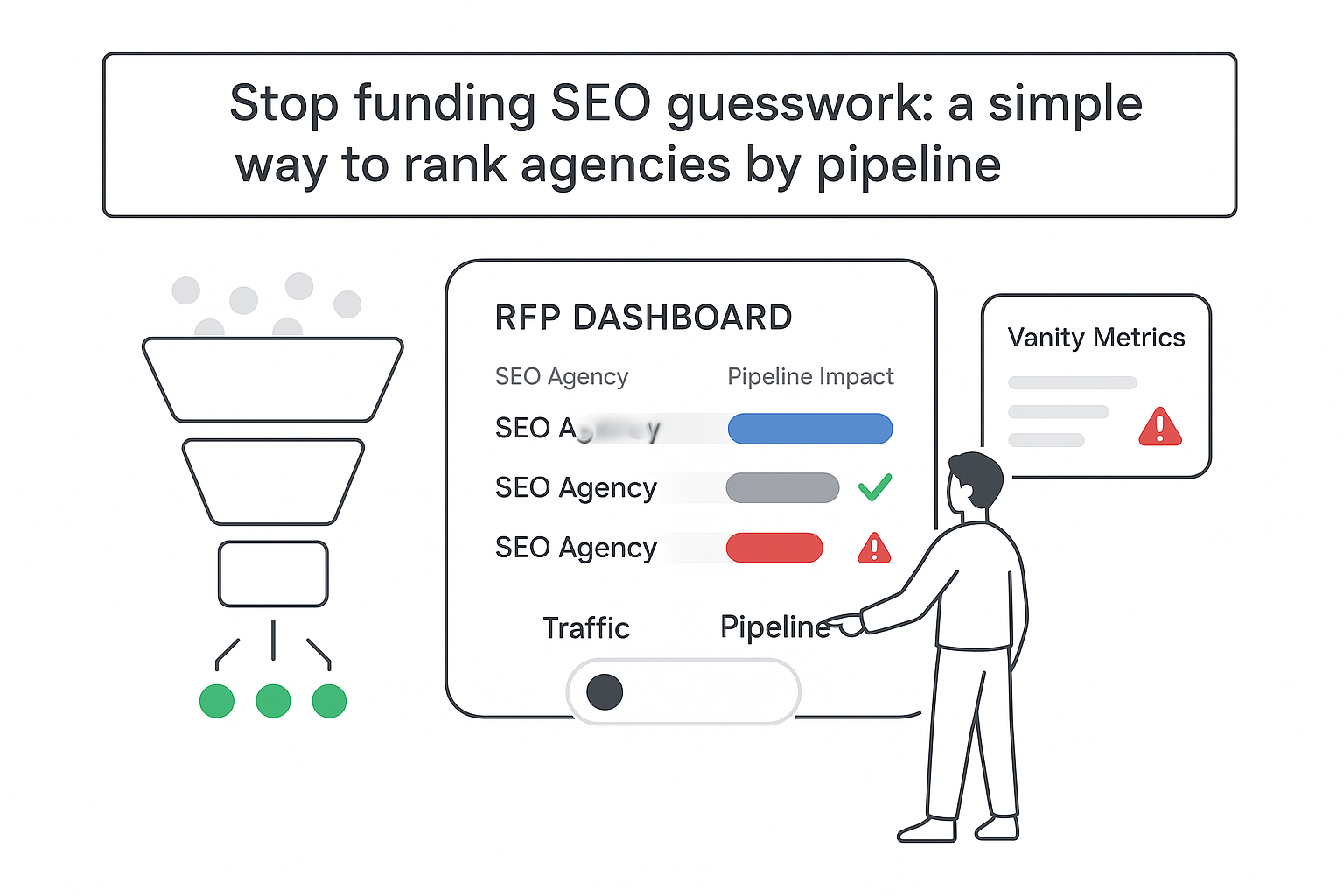


.svg)